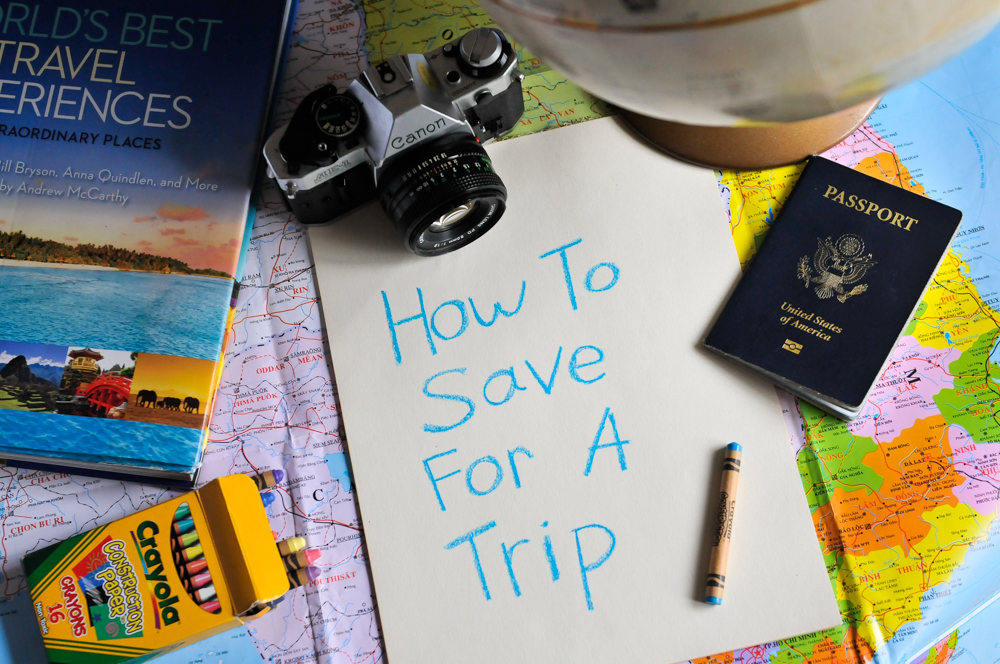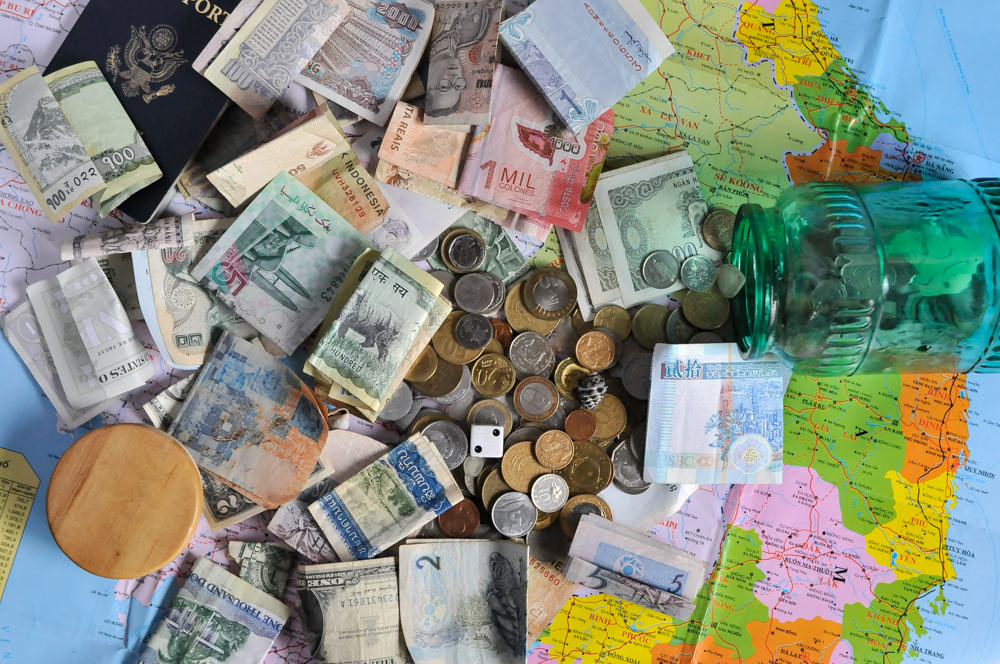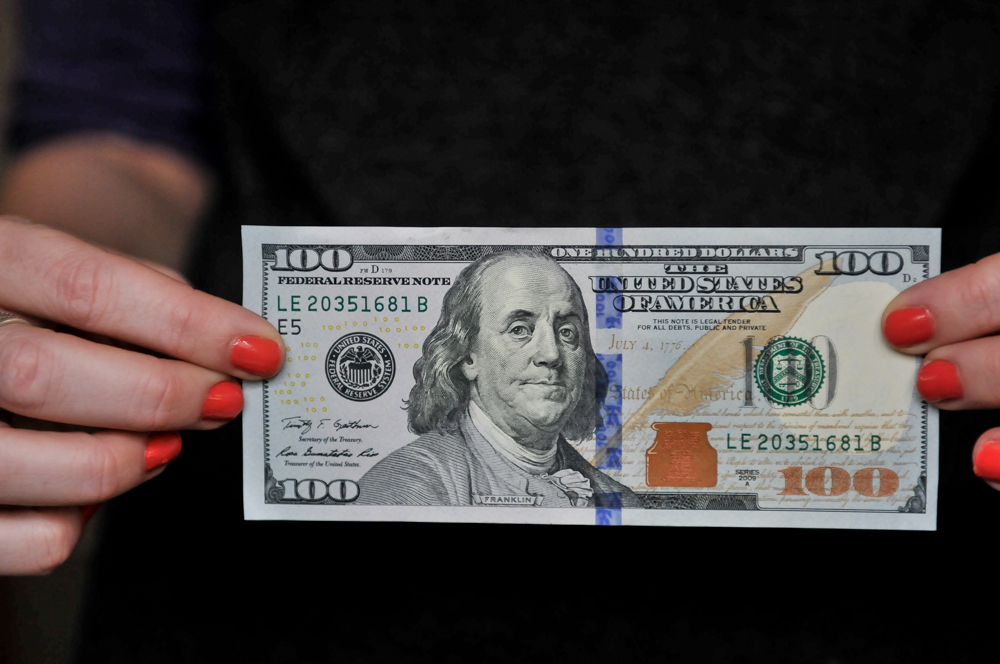Creating a travel budget is easier than you think. There are a couple ways to go about it, either you go in with no expectation and determine what you need to have the dream vacation you desire or you have a pre-determined budget that you’d like to confine yourself to. Both of these scenarios still require a decent amount of planning and research if you intend to be successful. First, we will cover how to create a budget, second we will discuss strategies for sticking to the budget, we’ll cover what happens if you think your budget is too tight, and lastly I’ll share a few travel budget examples.
Creating a Travel Budget
- Plan your trip or vacation. This step requires a glass of wine as you sit and think through every aspect of your trip. You want to jot down all your expected expenses from the Uber to the airport to tipping the bellhop to the island bus tour to the spa treatments to the snorkeling to the nightly cocktails. The more detailed the better as this will help you fill out your budget in a very realistic way. If you’re looking for a more general budget, than you can think more broadly about each day and the expenses you’ll incur.
- Split your expenses into general categories. Transportation, activities, accommodations, meals, etc. Group like costs together within the general categories and try to refine them even tighter into more detailed sub categories. For instance, don’t simply write 9 meals, instead write 3 breakfasts, 3 lunches, and 3 dinners, which will all fall under the main category of food. Each of these meals will fall into different price ranges since you probably aren’t ordering 2 beers with breakfast like you are at dinner. The more detailed and refined each sub category is, the easier it will be to complete the next step.
- Research the cost of each category at your vacation destination. I promise you that this is much easier than you’d think. Start with the super specific line items like skydiving or an hour-long kayak tour. Find a couple tour companies and determine the price range for that activity. Record the average cost or if you’re sticking to a very tight budget, the best price you can find, conversely if you’d like to pad your budget, jot down a price from the higher end of the range. If you’re dealing with foreign currency, I recommend estimating everything in the destination country’s currency and converting it later (see step 5). When it comes to figuring out the food budget, google average price of cup of coffee, beer, breakfast, lunch, dinner, etc in ____(your destination here)____. You could also look up a few of the restaurants that you are planning to eat at and get an even more accurate idea of what you’re likely to spend. Determining costs like transportation, accommodation, meals, etc, has become extremely easy with google. There are dozens if not hundreds and thousands of blogs written about every destination out there. A lot of times bloggers will share actual numbers and costs from their trips. If they don’t disclose specifics in the blog post, there is no harm in commenting on the post or emailing them and asking about prices. Most will be happy to share.
- Remember to pad your budget for areas like tax, tipping, and incidentals. This may take a little bit of research as some countries are bound to have different tipping customs than your own. Also organize your list so that the first items to fall under each category are your known expenses and the last under the category are the looser estimates and incidentals. This will give you a better idea of where you can play around with your budget if it’s well under or over what you thought it would be.
- Find the sum of each individual or sub category and then determine the sum of the main category it falls under. Now you can convert your presumed expenses into your home currency, which will give you an idea of your trip’s expenses. You can find up to date currency conversion rates and charts online. If you’re planning for a trip far in advance, like a year or two, you may want to look at the overall trend in currency exchange and the market in general. This will give you at least an idea if you should pad even more money into the budget to mitigate a drop or spike in the exchange rates.
Read on below to see how I stick to my trip’s budget once I’m in vacation mode.
Sticking to a Travel Budget
There are a few ways to stick to your budget once you embark on your trip. I usually keep myself on track via one of three ways: budgeting by day, budgeting by category, budgeting by the line item. I determine which way to track my budget depending on how tightly I need to stick to it, but you may find you like a particular method depending on your personality. Type A people usually budget by line item or by category while Type B personalities usually budget by day and almost never by item.
Travel Budget by day:
Budgeting by day means you’ve divided your entire trip budget by the number of days of vacation. Your goal will be to spend less than the daily budget, knowing that some days you’re bound to go over, but that the other days where you spent less will pick up the tab.
There are a couple easy ways to keep track of your daily budget. If dealing with cash, withdraw the total amount (or a few days worth) and split your money into daily allotments. If you have any left over at the end of the day, set it aside, this will be extra in case you overspend in the future. By keeping the extra separate instead of say, dividing it up between the remaining days, will help you determine if you can afford an unexpected splurge.
If dealing in credit or debit, sign up for email balance alerts. You can select a setting that will tell you your balance at certain times a day. Sign up for these email alerts at least once per day that way you can subtract the difference and determine what you spent yesterday. The only time this fails is when the vendor doesn’t post their daily transactions or if they post as $1 or $100 before the known amount is actually recorded – this practice is common with gas stations.
If dealing with multiple people on a single budget, try Visa gift cards. This may seem like a strange approach, and while it’s not right for each situation, it’s an easy way to split up money without having to worry about counting out cash each day. It also puts the budgeting directly into each individual’s hands instead of leaving it up to you to babysit during each transaction.
Travel Budget by category:
Budgeting by category means you’ve allotted a certain amount of money for each sphere of the vacation i.e.: transportation, food, accommodation, etc. and you will remain within the defined budget for each category over the course of the trip. You could further divide the category budgets by day which will tell you your accommodation or food allotment for each day as well. This is helpful if you want to splurge on a hotel room, but you’re unsure if you can swing it. By looking at your budget for that category, subtracting what you’ve already spent, and dividing it by your remaining days, you should have a better idea if booking the 5 star room makes sense for you.
There are a couple ways to make budgeting by category easier to track while on vacation. You should have a note on your phone or in your wallet that reminds you how much cash each category requires. Another option is to print a list or jot down on each envelope the sub categories and how much you are approved to spend in each section. This will be a constant reminder of your budget when you reach into the envelop for cash. During the day you can also jot down what you’re spending in each category so at the end of the night you can ensure everything balances out. Maybe this is enough for you.
You can take it one step further, by having a print out of all the subcategories and estimates for each instance of spending, when you then spend that money, you could cross off the item on the list. If you spent less than the stated amount, simply cross it off, if you spent more, circle the item as a reminder for future days that you may need to tighten up in that area going forward. If you see that you’re crossing off everything (meaning you’re spending less than the allotted amount) you can expect to have some surplus at the end of vacation.
Travel Budget by item:
Budgeting by item is for the super planner or those caring for a large crew of people all pulling from the same cash source. Budgeting by item allows you to keep well defined parameters for just about every aspect of spending on vacation. Budgeting by line item cannot possibly account for everything though, so if this is the route you take, you *must* remember to budget for incidentals and extras. (The other two budget tracking strategies will (hopefully) naturally have extra spending money piling up as the days pass.)
If you are detailed enough to desire budgeting by the item, I recommend printing out your budgeting spreadsheet or having it handy on your phone as you’ll need to reference it each time you make a purchase. Write down exactly what you spent in real time or at the end of each day to ensure you’re on track. You can also use the cross off (if you spent less than the budget) or the circle (if you spent more than the budget) method if you do not need down to the cent tracking while on the trip.
My travel budget is too tight, what should I do?
If it seems like you can’t afford your trip, you’ll want to be honest with yourself. Is now the right time? Do you have the cash to travel and actually enjoy it? Or should you wait? If the ticket is bought and you’re going, there are areas of your budget you can tighten and there are probably untapped resources to help in other ways.
First think of all the ways you can cut back in your budget. Make sure they are realistic or you are setting yourself up for failure later on during your vacation and this is no Bueno.
How can you cut back? Here are a bunch of examples:
- Forgo the travel data plan for your phone – learn to travel without data, you’ll be fine.
- Brew your own coffee
- Purify your water instead of buying bottled (use purifying tablets or a SteriPen)
- Drink one less beer per day
- Share one meal per day with your travel partner
- Avoid eating out for all meals and buy groceries instead
- Venture to the less touristy areas for cheaper eats or visit street food carts instead of sit down restaurants
- Smoke 3 less cigarettes per day
- Bike, walk, and use public transit instead of private taxis
- Ride an overnight bus or train instead of flying within the country
- Gain free accommodation by trading work or some talent (professional photography, web design, social media marketing, etc) with your host
- Use credit card points or frequent flier miles to offset some portion of the trip
- Don’t buy souvenirs
- Barter and haggle (respectfully) like it’s your day job. Pay attention to pennies if you have to.
- Consider each expense, what areas are less important to you? What if you had to cut the most expensive activity? What are you willing to do to make that money or scrape it from other areas in the budget in order to afford it?
- Is your birthday or Christmas coming? Ask for a specific part of the vacation or trip to be gifted to you. Maybe your brother gives you $40 specifically for your snorkeling adventure.
- If you’re really tight on cash, treat this trip less like a luxury vacation and more like a penny-pinching experiment. Cut back in any way possible with each spending decision and see just how far you can make your money stretch.
Trip Budgeting Examples
Road Trip Travel Budget for a Two week road trip for 2 people :
Car Maintenance:
- $60 Oil change
- $20 RainX washer fluid
- $25 Wipers
Parking fees:
- $40
Highway Tolls:
- $50
Gas:
- XXXX amount of miles divided by your car’s average gas mileage = approximate number of tanks of gas
Accommodation:
- $300 Hotel for 2 nights
- $240 Airbnb for 3 nights
- $144 Campground for 6 nights
- $0 BLM campground for 3 nights
Food:
- $12 Camp coffee 1 bag = 30 cups
- $30 Coffeeshop $3 x 10 cups
- $30 Camp Breakfast groceries for 18 servings. (Oatmeal, dried fruit, brown sugar, kefer, granola, cereal, milk)
- $0 Provided Hotel/airbnb Breakfast x 10
- $96 Camp/Airbnb Lunch $4 x 24 servings (sandwich stuff, veggies, pasta salad, tuna salad, brats, soup, etc)
- $40 Restaurant / take out lunch $10 x 4
- $200 Camp/airbnb Dinner $10 x 20 servings
- $280 Restaurant / take out dinner = $30 per 8
- $35 Snacks groceries for 28 servings
- $20 Dessert groceries for 28 servings
- $100 Alcohol x 48 beers + 20 drinks (2 24 packs + 1 handle + mixers)
- $40 Drinks x 96 seltzer’s (8 12 packs of seltzer)
Activities:
- $240 Hot spring + spa for 2
- $160 Rock climbing clinic for 2
National Parks Pass:
- $89
Incidentals:
- $280 budgeting $20 x 14 days
Travel budget for one in South East Asia for sixty days:
(For simplicities sake, I didn’t price out this entire adventure, but this would be my starting point)
- Flight to Thailand
- Visa
- Immunizations
- Airport expenses
- 10 nights northern Thailand
- 10 Breakfast
- 10 Lunch
- 10 Dinner
- Elephant camp
- Night market shopping
- Waterfall excursion
- Transportation
- Incidentals
- Flight to southern Thailand
- 8 nights southern Thailand
- 8 Breakfast
- 8 Lunch
- 8 Dinner
- Dive course
- Motorbike rental
- Kayak rental
- Massage
- Transportation
- Incidentals
- Bus to Laos
- Visa for Laos
- 14 nights Laos
- 14 Breakfast
- 14 Lunch
- 14 Dinner
- River cruise
- Trekking excursion
- Massage
- Tubing
- Bike rental
- Transportation
- Incidentals
- Bus to Cambodia
- 5 nights Siem reap
- 5 Breakfast
- 5 Lunch
- 5 Dinner
- 3 day pass Angkor wat
- Bike rental
- Yoga class
- Cooking class
- Transportation
- Incidentals
- Flight to Vietnam
- Vietnam visa
- 3 day Monestary Yoga retreat Vietnam
- Bus to southern Vietnam
- 5 nights southern Vietnam
- 5 Breakfast
- 5 Lunch
- 5 Dinner
- Cooking class
- Cave tour
- Kayak rental
- Motorbike rental
- Flight to Malaysia
- Singapore visa
- 3 nights Kuala lumpur
- 3 Breakfast
- 3 Lunch
- 3 Dinner
- Museum entrance fee
- Botanical garden entrance fee
- Night market shopping
- Temple fee
- Flight to Bali
- 5 nights Ubud
- 5 Breakfast
- 5 Lunch
- 5 Dinner
- Yoga class
- Volcano excursion
- Ferry ticket
- 5 nights lemognan
- 5 Breakfast
- 5 Lunch
- 5 Dinner
- Surf lesson
- Dive lesson
- Flight to Singapore
- Singapore visa
- 2 nights Singapore
- 2 Breakfast
- 2 Lunch
- 2 Dinner
- Museum entrance fee
- Tall building tour fee
- Movie ticket
- Subway cost
Travel budget for a bachelorette party in Nashville
- $400 Roundtrip Flight to Nashville
- $165.75. Airbnb accommodation $1,326 divided by 8
- $80 Tickets to Country Music Hall of fame + other museums
- $250 Spa day including tip
- $80 Tattoo including tip
- $12 Matching t-shirts
- $45 Breakfast 3
- $50 Lunch 2
- $120 Dinner 3
- $150 Drinks X 3 days.. 6 drinks per day..including tip .. averages $7 per drink
- $50 Souvenirs
- $26 Ubers .. 2 Ubers each time.. about 8 total rides averaging $13 per ride $208/8=
- $100 Fun for the bride
- $100 Extras
If all that travel budget crafting overwhelmed you, it shouldn’t. Vacations are meant to be fun, but if you’d rather not draft your own budget, it is possible to search ____(your destination)____ daily budget. You will get a good idea of what you’re able to live on in that destination. Keep in mind that this is more of a general budget. It’s not *your* budget, accounting for your lifestyle, and therefore I don’t think it’s such a successful tactic, but more of a general idea of what others can live on. Their tastes and idea of vacation may be completely different than your own. If you have any worries or anxieties about saving for or affording a vacation, make a budget! This will give you the information you need to prepare for and enjoy yourself while on vacation.




